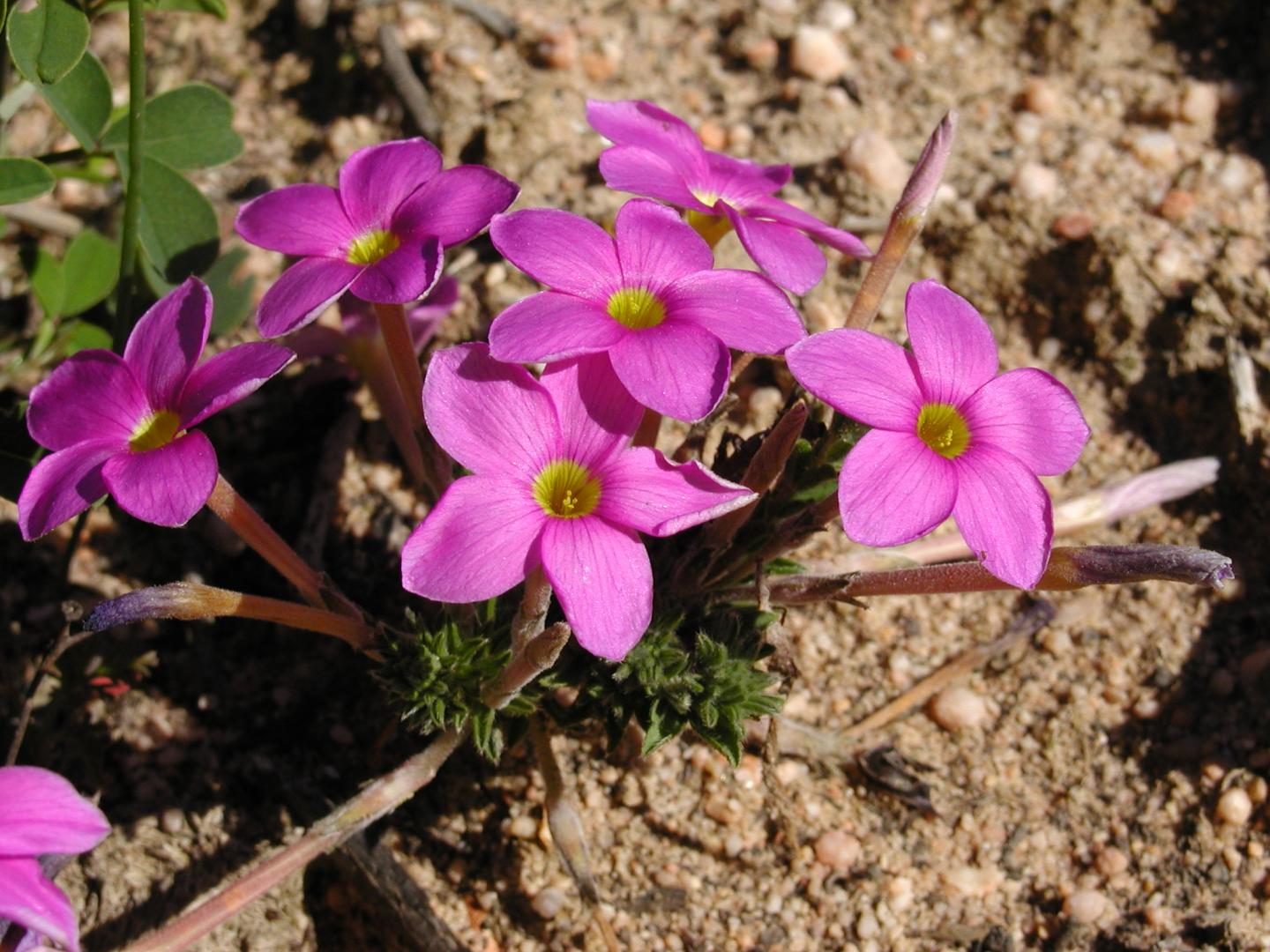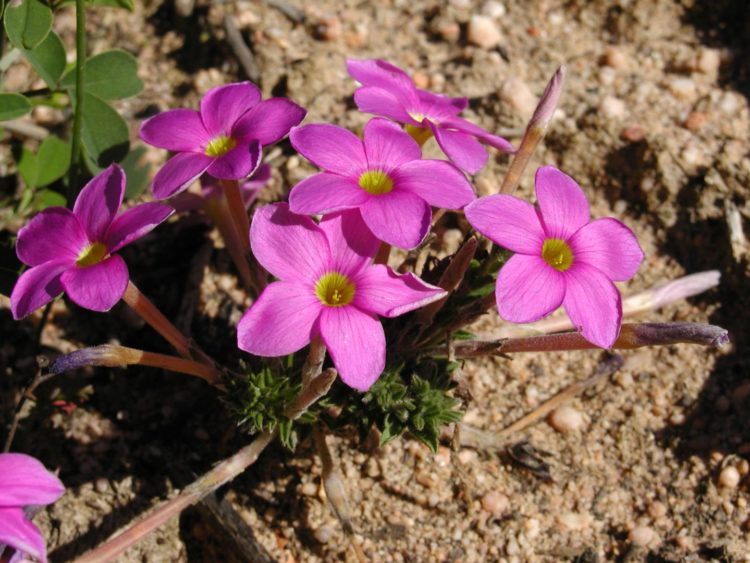Researchers have found evidence for a vertically inherited symbiosis between the Cape geophyte genus, Oxalis, and the nitrogen-fixing bacterial genus Bacillus.

Credit: Léanne Dreyer
Botanists from Stellenbosch University (SU) have come one step closer to unraveling the mystery of the Cape Floral Region’s extraordinary levels of biodiversity.
To date at least some of this remarkable diversity has been attributed to plants’ ability to adapt to micro-niches, created by factors such as a stable palaeo climate, reliable winter rainfall, geographical gradients and diverse soil types.
Now botanists from SU’s Department of Botany and Zoology have found evidence that the largest Cape geophyte genus, Oxalis, has developed a unique association with the bacterial genus Bacillus, that help it to fix nitrogen from the air and to perform extraordinary feats of germination.
Furthermore, they proved that the Bacillus bacteria are so integrated into this symbiotic relationship that they are even inherited from mother plant to seed.
The results of the study was published in the journal BMC Plant Biology recently, with the title “Nitrogen-fixing bacteria and Oxalis – evidence for a vertically inherited bacterial symbiosis”.
Prof Léanne Dreyer, a leading expert on Southern African Oxalis at SU and one of the authors, says this is the first report of such a system of vertical inheritance of endophyte bacteria for geophytes.
The Cape is renowned for the most diverse geophyte flora in the world, with 2 100 species from 20 families, but the factors driving this remarkable diversity are still poorly understood. This diversity is even more remarkable if one takes into account that it occurs in an environment that measures some of the lowest nitrogen and phosphorous levels globally.
How does this symbiotic relationship work?
From previous work, Dreyer’s research group established that 60% of Oxalis species have recalcitrant seeds. This means they cannot tolerate desiccation and have to germinate immediately after being shed.
But even more unique in these species is the incidence of inverse germination, where the seed leaves and the first foliar leave unfurl within the first 24 to 48 hours, without any support of a radicle or roots.
It was in the process of trying to figure out this extraordinary feat of germination that one of Dreyer’s postgraduate students, Dr Michelle Jooste, found evidence of an assemblage of bacteria and fungi in the vegetative and reproductive organs of six Oxalis species.
“We found that the bacteria and fungi inhabit the mucilage surrounding the base of recalcitrant Oxalis seedlings. The mucilage is a thick gluey substance that is excreted by the seed upon germination. Some of the bacteria and fungi we found in the mucilage were recruited from the surrounding soil, but others were provided via inheritance by the seed itself,” Jooste explains.
These bacteria are hosted within the plant body, quite possibly in specialized structural cavities, where they feed on oxalate – an organic acid produced by plants as a byproduct of photosynthesis.
Nine of the most abundant species of bacteria identified in the study were from the genus Bacillus, and three of these have the capacity to utilise oxalates as their only and often preferred source of carbon.
“We think this unusual relationship must have evolved over millions of years, helping Oxalis to make the most of a very predictable winter rainfall season, giving it just enough time to spurt enough growth above ground to also form a bulb underground in order to survive until the next winter’s first rains. Indeed a Russian roulette of germination strategies!” Dreyer explains.
But there are still many more questions than answers in this story.
How the mucilage is formed and what it consists of are the foci of a current study, while another postgraduate student is devising microscopic techniques to pinpoint whether these endophytic bacteria do, in fact, dwell in the unusual cavities that traverse all organs of most recalcitrant Oxalis species. The extremely rapid mode of bulb formation is also under investigation.
“In comparison with other Mediterranean environments, the biodiversity of the Cape Floral Region is off-the-chart. But why that is so, is still one of the greatest mysteries that botanists are trying to unravel,” Dreyer concludes.
###
Media Contact
Léanne Dreyer
[email protected]
027-021-808-3070
Related Journal Article
http://dx.





